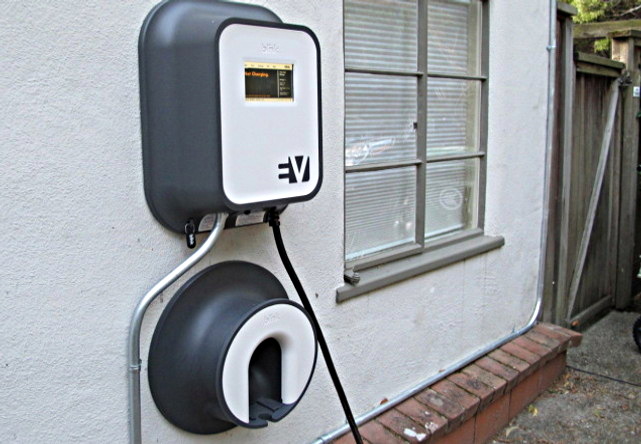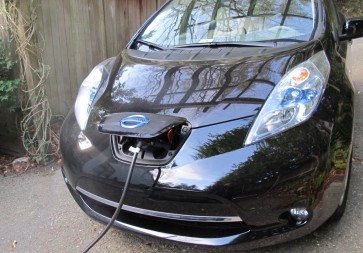As the EV charging infrastructure slowly rolls out, most people are finding the most reliable, and cheapest, place to charge is at home.
Choosing a Home Charger
Someday the hope is that we should all be able to pick up a home charger at our local car dealership but right now it’s up to us early adopters to do the homework. When I reserved my Leaf back in the fall of 2010, Nissan was requiring a home visit from their charging contractor, AeroVironment. I paid one hundred dollars to have an AV installer come to my home and give me a bid for a charger and installation which came out to about 2,400. There is a federal credit right now for 30 percent of the purchase and installation costs but I found a better deal. With the help of federal stimulus funds, some charging companies are offering chargers and installation for free. I heard from two different people that there was a long wait for the Charge Point America program, sponsored by Coulomb Technologies, so I applied, online, for the EV Project run by Ecotality. Volt and Leaf drivers who qualify receive a smart charger and installation up to 1,200 dollars, at no cost. In turn the EV owner gives the company online access to charging data. My application and installation could not have been smoother, except for one small complaint. After the install I noticed I was getting knocked off my internet connection more than usual. I asked the company about it and they said they were having some similar reports and thought an upcoming software update would fix it. I am waiting to find out if the update helps. Unlike the trickle charge pack I carry in my trunk, my level two black and white, "Blink," charger is mounted to the side of my driveway and runs on a dedicated 220/240-volt line.
Making the Charger Work for You


